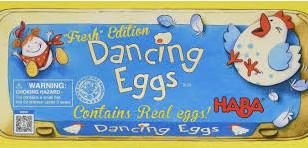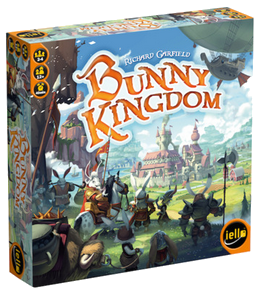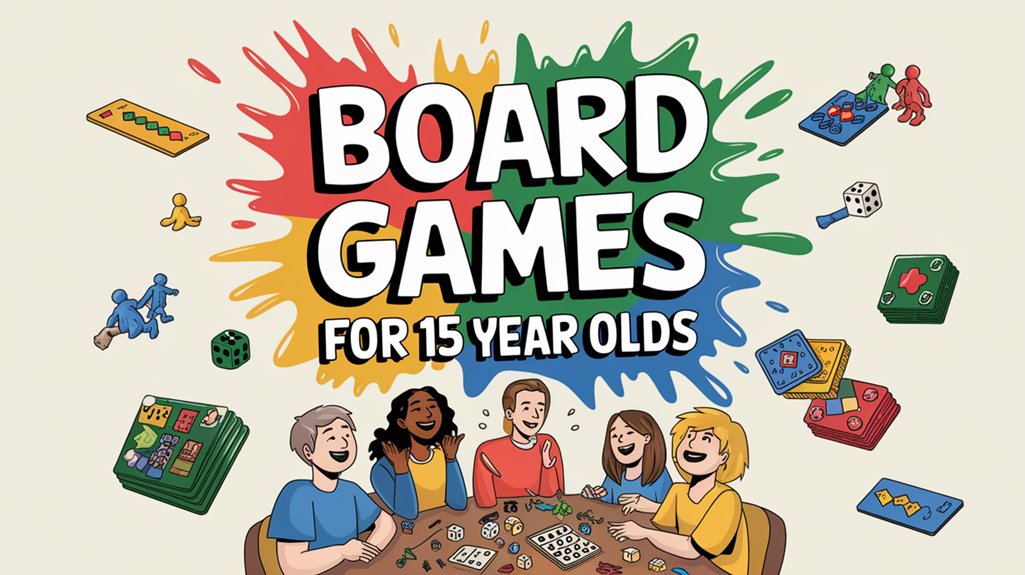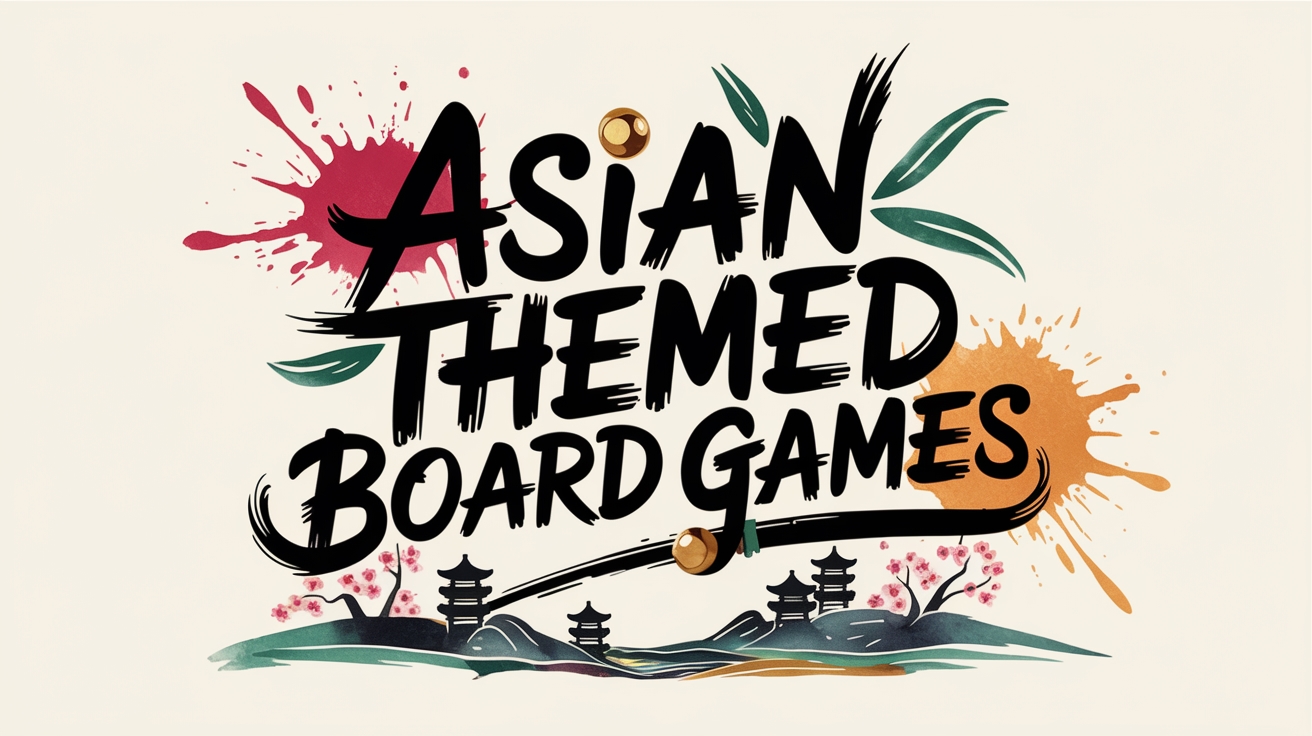Easter-themed board games provide seasonal entertainment featuring rabbit characters, egg collection mechanics, and spring elements. They incorporate various gameplay systems – from dexterity challenges and area control to resource management – with vibrant pastel aesthetics. These games balance holiday themes with mechanics ranging from simple roll-and-move to more complex drafting and action selection, creating distinctive tabletop experiences.
Dancing Eggs
Hilarity ensues in Dancing Eggs, a fast-paced game packaged in an authentic egg-box containing nine yellow plastic eggs (worth 1 point each) and one special yellow wooden egg (worth 2 points). Players roll the red die to determine their actions: taking eggs from the box, stealing from opponents, or engaging in physical challenges like dropping and catching eggs or racing around the table.
Successfully acquiring an egg allows players to roll the white die, determining where to place their prize. The game maintains a frantic pace until someone inevitably drops an egg, immediately ending the round. Final scoring tallies the value of collected eggs, with the wooden egg providing a strategic advantage. This accessible yet chaotic competition appeals to both children and adults, combining physical dexterity with tactical decision-making in an egg-centric struggle for supremacy.
Bunny Kingdom
Richard Garfield’s Bunny Kingdom transports players into a medieval world where rabbit lords vie for domination through strategic area control and resource management. This compact yet deep strategy game from Iello features a striking square box measuring 11.5 x 11.5 x 3 inches, perfect for tabletop sessions.
Players draft cards to claim territories, build fiefs, and harvest resources across a gridded terrain. The game’s scoring system rewards both horizontal and vertical expansion, creating tension between immediate territorial gains and long-term planning. Bunny Kingdom’s brilliance lies in its deceptively simple mechanics that unfold into complex strategic decisions.
Available in various conditions—from unpunched with sealed cards at $40.00 to slightly used at $27.00—this game offers excellent value for its MSRP of $49.99. The NKG Part #2147680050 assists with inventory tracking and customer inquiries.
Oh My Goods
While Bunny Kingdom focuses on area control, Alexander Pfister’s Oh My Goods! immerses players in intricately designed production chains and resource management within a surprisingly compact package.
Players begin with a charburner and must navigate the tension between conservative and risky production strategies. The game’s core mechanism involves drawing cards until two half-sun symbols appear, determining worker efficiency based on resource availability. Victory points accumulate through building construction and production chains that convert basic resources into valuable goods.
Despite its small box design, Oh My Goods! incorporates complex economic systems where coal and flour become essential for advanced manufacturing. The game creates moments of tactical brilliance but can frustrate players when market randomness disrupts planned strategies. This Easter-themed economic engine builder rewards resource diversification while challenging players with limited time—the game concludes after eight buildings are constructed, often before complex production chains reach full potential.
Hare & Tortoise
Unlike traditional roll-and-move racing games that rely heavily on luck, Hare & Tortoise introduces a revolutionary movement system where players strategically spend carrots to advance their animal tokens around the racetrack.
Starting with 65 carrots, players navigate using a triangular cost structure: moving one space costs one carrot, two spaces costs three, and costs increase exponentially with distance. The board features strategic spaces where players can harvest additional carrots based on race position—landing on a space matching your position yields 10 times that number in carrots.
Success requires precise resource management, as players must finish with fewer than 10 carrots remaining. Advanced tactics include backtracking and strategic donations to obstruct opponents. This Spiel des Jahres winner balances accessibility with deep decision-making, accommodating up to six players regardless of age or experience level.
Hoppladi Hopplada
Hoppladi Hopplada, released at Essen 2008, offers a push-your-luck dice game centered around rolling customized rabbit-themed dice. Players roll seven dice showing rabbits (points), sheds (multipliers), and carrots, then strategically decide which to keep for scoring and which to re-roll.
| Gameplay Element | Mechanics | Risk/Reward |
|---|---|---|
| Dice Management | Keep scoring dice or re-roll | Higher points vs. bust chance |
| Full House Bonus | Using all 7 dice allows re-rolling | Exponential scoring potential |
| Continuation Option | Next player may continue previous roll | Greater risk but higher starting value |
The game introduces a distinctive twist to the push-your-luck genre by allowing players to either start fresh with seven dice or continue where the previous player stopped. This calculated risk mechanic creates escalating tension until someone reaches the point threshold and wins.
Hoppy Floppy’s Happy Hunt
Preschoolers enter the colorful world of Hoppy Floppy’s Happy Hunt, a tactile board game designed specifically for children ages 3 and up. This award-winning game accommodates 2-4 players and centers around collecting colorful carrots using the Hoppy Floppy Squeezer tool—developing essential fine motor skills during gameplay.
The game mechanics follow a structured approach:
- Players spin the spinner to determine their target carrot color
- Using the squeezer tool, players must grasp and transfer carrots to their baskets
- Strategic thinking develops as players analyze remaining carrots and plan accordingly
- First player to fill their basket with the required carrots wins
Priced at $19.99, this fifth preschool Squeezer Game in the series builds upon the success of its predecessor, the Sneaky, Snacky Squirrel game, while reinforcing social skills like turn-taking and cooperative play.
Karottenklau
Karottenklau (German for “Carrot Pinching”) offers a cooperative gameplay experience where strategic resource management meets race-against-time mechanics. Players must collectively harvest four carrots before the rabbit consumes an equal number.
Gameplay revolves around a specialized six-sided die determining available actions: planting carrots in the light green patch, watering to transfer them to the dark green harvest-ready zone, or harvesting fully-grown carrots. The Gardener Mole face grants players freedom to choose any action, while rabbit results advance the antagonist one or two spaces clockwise, potentially consuming any carrots in its path.
This compact game accommodates 1-6 players ages 4+, completing in approximately five minutes—ideal for young players with limited attention spans. The English-instructed box fits perfectly in Easter baskets, delivering engagement without sugar.




